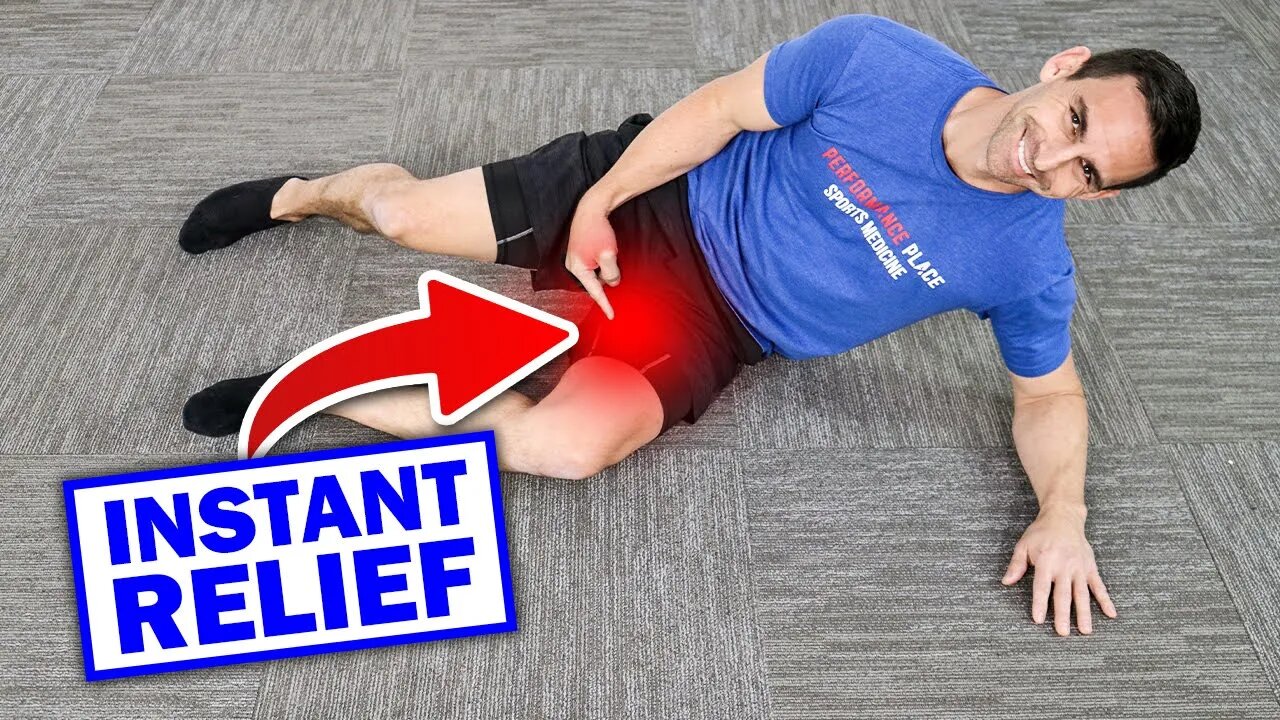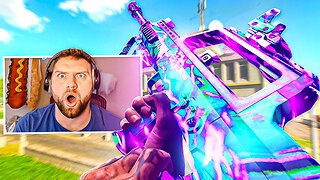Premium Only Content

Groin Pulls (Adductor Strains) 9 Amazing Exercises & Stretches
In this video, we will show the Stretches & Exercises for Groin Pulls. This is a follow along video where we go through the whole home exercise and stretch program with you. We have stretches for the glute muscles, adductor muscles and hip capsule. We have strengthening exercises for the glute muscles, hip flexor, abs and legs.
Want more info? We have a free webinar that covers adductor strains, groin strains, hip joints, labrums, lower abdominal strains and sports hernia diagnosis in detail. Use this link to get access. https://bit.ly/37thtNF
#hippain #hipflexor #hipmobility
To work with us, contact us using this link https://bit.ly/3zCBnzZ or call us 714-502-4243. We have online programs, virtual and in-person options.
Costa Mesa, CA www.p2sportscare.com
An adductor muscle strain or groin pulls means the same thing. This diagnosis describes an injury to the junction of where the muscle becomes the tendon, also known as the musculotendinous junction.
A muscle strain is very different from a partial and complete muscles tear. Muscle tears tend to create local swelling AND bruising. Generally speaking if there was no bruising then there was not a large tear.
Partial tears mean the soft tissue is still attached to it’s proper location. In simple terms, there has been some tear
What does the diagnosis mean…. It is a symptom, not a diagnosis. Since it is a symptom, it is not describing WHY you are having the symptom and it does not identify a diagnosis.
Let me say this in simple terms: If your car doesn't start, it is a symptom. Possible reasons why or diagnoses would be: no battery, no starter, or you’re simply out of gasoline.
[Performance Place website low back article excerpt] Hip flexor pain can wreak havoc on your love for running. Many of us run for weight loss or because it’s something we feel we “need to do” to be healthy. But not Julie. She simply loved the act of running!
A 10-minute marathon runner in her mid-40s, Julie would typically run five days per week. Some days she would run in track groups, rising to the challenge when her friends motivated her to get faster. Other times, she relished the solitude of solo runs.
Running was Julie’s “fix.” So when a cluster of symptoms started keeping her from doing what she loved, she knew she needed to take action. She came to Performance Place® Sports Care after seven months of unsuccessful attempts at treating the pain. I knew a detailed examination and proper guidance on how to decrease her symptoms would get her on the right track.
How It All Started
About 10 months ago, Julie began to notice hip flexor and sit bone pain when she ran. Since she didn’t do anything to create it, she thought it would go away on its own—just like most of her minor running-related issues had in the past.
But this time was different.
Soon, her hip flexor and sit bone were starting to ache at the very first step of her morning run, causing her pain for the entire duration. Her sit bone region would feel aggravated all day, especially exacerbated when she sat for long periods of time at work. The pain weighed on Julie’s mind. She wondered what she could do to make it go away.
When Julie couldn’t stand the aching any longer, she decided to take a break from running for a few days. Her hip flexor pain stopped, so she made the difficult decision of not running for two weeks.
Although it was painful to give up running, she hoped the pause would give the condition time to improve. And it did—until she hit the track again.
Just one minute into Julie’s first run in weeks, the pain surged back in full force. Frustrated, she decided to seek help.
What Didn’t Work
Julie started by exploring the typical healthcare route. But she quickly became irritated when her primary care doctor suggested rest and over-the-counter anti-inflammatory medications. She had already tried rest, to no avail, and she didn’t like the idea of medication. Her doctors thought she could have a labral tear in her hip, hip impingement or hip arthritis.
Unsatisfied, Julie searched for a better solution.
Her next stop was to see a physical therapist who was highly recommended by one of her friends. Physical therapy was covered by Julie’s insurance, minus deductible and copay, so she decided to give it a try.
01:15 Hamstring stretch with belt
03:26 Active Adductor stretch
05:25 Contract/ Relax Hip Capsule Stretch
07:28 Contract/ Relax Glute Stretch
09:29 90-90 Breathing
10:29 Glute Reach/ Rolls
13:05 Side Lying Isometric Adductor Presses
15:04 Hardstyle Planks
16:04 Split squats
-
 17:01
17:01
Clownfish TV
5 hours agoTea On HER! Tea App for MEN Turns Tables on Controversial 'Dating' App!
61410 -
 LIVE
LIVE
JuicyJohns
1 hour ago $0.50 earned#1 REBIRTH ISLAND CONTENT 10+ KD | !loadout !300
71 watching -
 25:29
25:29
DeVory Darkins
1 day ago $9.59 earnedTrump makes SHOCKING announcement as MSNBC MELTS DOWN in furious rant
26.8K76 -
![POTUS+CENSUS+SCOTUS: START [D] Power Implosion | Russian Spec_Ops Seize Adrenochrome Cargo](https://1a-1791.com/video/fww1/59/s8/6/-/w/O/-/-wO-y.0kob.jpg) 1:02:54
1:02:54
QNewsPatriot
14 hours agoPOTUS+CENSUS+SCOTUS: START [D] Power Implosion | Russian Spec_Ops Seize Adrenochrome Cargo
12.2K25 -
 LIVE
LIVE
LFA TV
2 hours agoLFA TV ALL DAY STREAM - WEDNESDAY 8/13/25
5,214 watching -
 1:21:38
1:21:38
JULIE GREEN MINISTRIES
3 hours agoTHE FDA WILL BE EXPOSED ON HOW THEY HAVE BEEN ALLOWED TO POISON YOU
69.1K169 -
 1:20:21
1:20:21
Game On!
18 hours ago $2.47 earnedIT'S MY BIRTHDAY! Let's Talk SPORTS!
18.2K1 -
 8:49
8:49
Faith Frontline
16 hours agoCharlie Kirk DESTROYS Fist Fight Challenge With ONE Epic Comeback
16K23 -
 11:26
11:26
Nicholas Bowling
20 hours ago $3.73 earnedJehovah’s Witnesses Feel ATTACKED by the Bible | Houston Recap
26K7 -
 2:01:24
2:01:24
BEK TV
1 day agoTrent Loos in the Morning - 8/13/2025
17.8K1